Begusarai, Bihar: Where Industry Meets Heritage
“From Soviet-Era Factories to Migratory Birds: A Journey Through Bihar’s Forgotten Powerhouse”
🔴 Introduction
Nestled on the northern banks of the Ganges, Begusarai is a paradox of contrasts. Known as Bihar’s “Leningrad” for its communist history and dubbed the “Cultural Capital of Mithila” for its folk traditions, this district is a melting pot of industrial grit and artistic soul. With a population of over 3.8 million (projected for 2025), Begusarai thrives as an agricultural hub while housing Asia’s largest oxbow lake, the Kanwar Lake Bird Sanctuary—a Ramsar Site teeming with migratory birds like the Brahminy Duck.
But Begusarai isn’t just about nature. Its skyline is dominated by the Barauni Refinery, a Soviet-collaboration project from the 1960s that still fuels Bihar’s economy. Yet, wander through its villages, and you’ll find Madhubani artists painting myths on mud walls and farmers reciting verses by Rashtrakavi Ramdhari Singh Dinkar, the revolutionary poet born here.
This guide unpacks Begusarai’s layered identity—its Bhumihar-driven politics, monsoon festivals, and hidden architectural gems—with granular details, travel itineraries, and cultural deep dives.
🟢 Detailed Introduction to Begusarai, Bihar
🔘 Geographic and Historical Significance
Begusarai, often hailed as Bihar’s “Industrial and Financial Capital”, lies on the northern bank of the Ganges River in the Mithila region. Established in 1870 as a subdivision under Munger, it gained district status in 1972. The city’s name is steeped in folklore, derived either from Begu’s Sarai (an innkeeper’s lodge) or Begum’s Sarai (a Mughal Queen’s rest stop during Pilgrimages). Its strategic location in the fertile Gangetic plains has shaped its agrarian economy, while Soviet-era industrial projects like the Barauni Refinery (1964) transformed it into a manufacturing hub.

🔘 Industrial and Agricultural Landscape
The district’s economy thrives on agriculture and industry. Over 80% of its population relies on farming, with litchi, maize, and oilseeds as key crops. The Barauni Refinery, a Soviet-Indian collaboration, remains a cornerstone, contributing ₹500 crore annually to Bihar’s economy. Additionally, Sudha Dairy processes 2 million liters of milk daily, supplying Bihar and Nepal. Despite industrialisation, Begusarai retains its rural charm, with villages practicing traditional crafts like Madhubani painting.
🔘 Ecological Marvels: Kanwar Lake Bird Sanctuary
Begusarai is home to Asia’s largest freshwater oxbow lake, the Kanwar Lake Bird Sanctuary, declared a Ramsar Site in 2020. Spanning 63 km², it hosts over 106 migratory species, including the endangered Siberian crane and Brahminy duck. The sanctuary is a paradise for birdwatchers, especially in winter when migratory flocks descend.
Also Read
Banoti Waterfall, Maharashtra: Where History and Nature Embrace
🔘 Cultural Identity and Festivals
As the “Cultural Capital of Mithila”, Begusarai celebrates festivals like Chhath Puja, where devotees offer prayers to the sun god in knee-deep river waters. The region’s folk dance, Dhuno-Naach, performed during Durga Puja, blends martial movements with conch-shell rhythms. Madhubani art adorns homes and markets, depicting Hindu mythology on handmade paper.
🔘 Political Dynamics and Caste Influence
Begusarai’s political history is marked by caste-driven shifts. The Bhumihar community, traditional landowners, dominated early 20th-century politics. The 1970s saw a communist surge, earning Begusarai the nickname “Bihar’s Leningrad”. Today, the BJP leverages Hindu nationalism and development promises, gaining traction among upper castes.
🔘 Education and Institutions
The district boasts notable educational institutions like Rashtrakavi Ramdhari Singh Dinkar College of Engineering and Ganesh Dutt College, affiliated with Lalit Narayan Mithila University. Schools such as Delhi Public School and Kendriya Vidyalaya emphasize quality education, reflecting Begusarai’s growing urban aspirations.
🔘 Demographics and Language
With a population of 2.97 million (2011 census), Begusarai is densely populated (1,540/km²). Hindi (79.77%) and Maithili (20%) dominate linguistically, with Urdu spoken by 9.5%. Hinduism (86%) and Islam (13.7%) are the primary religions.
🔘 Connectivity and Infrastructure
Begusarai is well-connected via Barauni Junction, a major railway hub linking Delhi, Kolkata, and Guwahati. National Highways 28 and 31 facilitate road travel, while the under-construction six-lane Ganges bridge at Simaria (completion: 2024) promises enhanced connectivity.
🔘 Architectural Heritage
Historical sites include the Naulakha Temple in Bishanpur, built in 1953 by saint Mahavir Das, and Jaimangla Garh, an island fortress near Kabar Lake. The Soviet-inspired Barauni Refinery, with its utilitarian design, contrasts with temples adorned in Mithila motifs.
🔘 Climate and Challenges
The region faces a humid subtropical climate, with monsoon floods (July–September) often disrupting life. Summers (up to 45°C) are harsh, while winters (15°C – 25°C) attract tourists. Environmental concerns, such as wetland degradation at Kanwar Lake, pose challenges to conservation efforts.
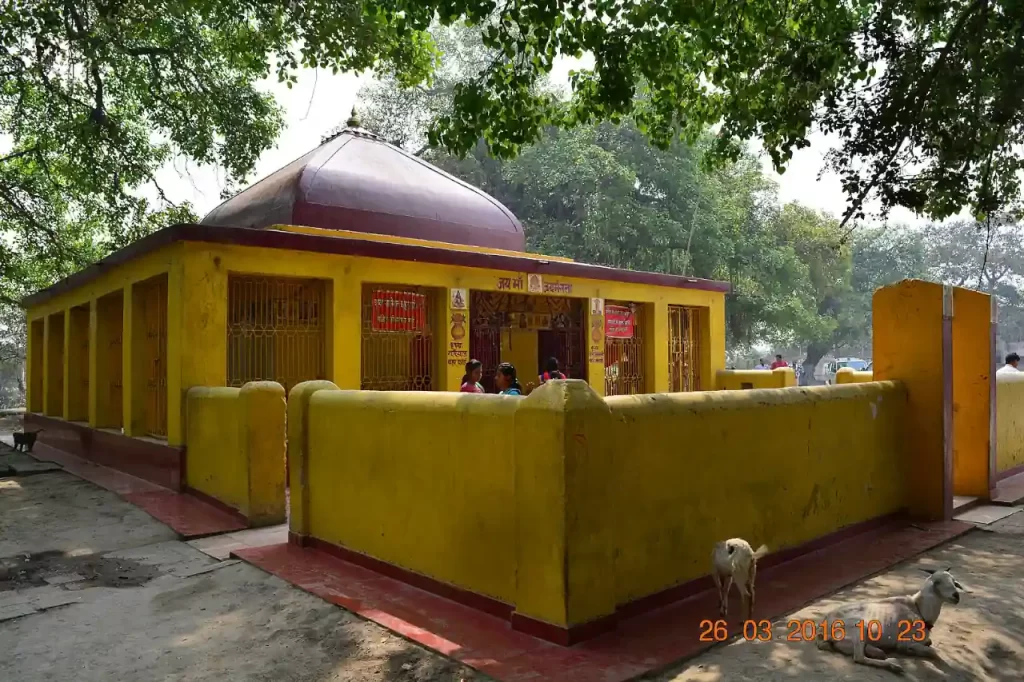
Begusarai, Bihar – The Industrial Heartbeat of Mithila
🟣 Section Breakdown:
👉 History & Etymology: From Begum’s Inn to Communist Stronghold
👉 Architectural Marvels: Temples, Forts, and Soviet-Era Factories
👉 How to Reach: Air, Rail, and Road Networks
👉 Best Time to Visit: Seasonal Secrets
👉 Top Attractions: Kanwar Lake, Dandari Forest & More
👉 Culture & Festivals: Chhath, Dhuno-Naach, and Mithila Art
👉 Economy: Agriculture, Barauni Refinery, and the Milk Revolution
👉 Demographics: Caste, Language, and Urban-Rural Dynamics
👉 Travel Tips: Weather, Local Markets, and Safety
👉 FAQs: Your Burning Questions Answered
🟠 Detailed Section Breakdown:
⭕ History & Etymology: The Tale of Two Theories
Begusarai’s name sparks debate. One theory credits Begu, a devotee of Bari Durga Maharani, who managed a Sarai (inn) for traders. The more popular legend traces it to a Begum (Queen) from Bhagalpur, who pilgrimaged to Simaria Ghat annually. Her temporary stay spot became “Begum’s Sarai”, later morphing into Begusarai.
➤ Historical Timeline:
⦿ 1870: Established as a subdivision under Munger.
⦿ 1972: Granted district status.
⦿ 1989: Kanwar Lake declared a bird sanctuary.
⦿ 2020: Kanwar Lake becomes Bihar’s first Ramsar Site.
➤ Communist Legacy:
In the 1970s, Begusarai became a CPI stronghold, earning the nickname “Bihar’s Leningrad”. Landowners like Chandrashekhar Singh paradoxically led land-redistribution movements, blending caste politics with Marxist ideals. Today, the BJP dominates, but CPI still holds two assembly seats.
⭕ Architectural Marvels: Where Mughal Meets Modern
⦿ Begusarai Fort: A 18th-century blend of Mughal and Rajput styles, with intricately carved gateways.
⦿ Chaiti Devi Temple: A 300-year-old shrine with terracotta reliefs depicting Maithili folklore.
⦿ Barauni Refinery: A Soviet-inspired industrial complex, symbolising Bihar’s mid-20th-century modernisation.
➤ Interview Insight:
Local historian Rajiv Kumar shares: “The refinery’s architecture was meant to mirror Soviet utilitarianism, but workers added Mithila motifs to its walls—a silent rebellion against foreign influence”.
⭕ How to Reach: Connectivity Simplified
⦿ Air: Nearest airport is Patna’s Jay Prakash Narayan International (110 km).
⦿ Rail: Barauni Junction (7 km) connects to Delhi, Kolkata, and Guwahati.
⦿ Road: NH 28 (Lucknow – Barauni) and NH 31 (Kolkata-Guwahati) crisscross the district.
➤ Distance from Major Cities:
⦿ Delhi: 1,050 km (16-hour drive)
⦿ Kolkata: 480 km (9-hour drive)
⦿ Patna: 125 km (3-hour drive)
⭕ Best Time to Visit: Seasonal Highlights
⦿ Winter (October–February): Ideal for birdwatching at Kanwar Lake. Temperatures: 15–25°C.
⦿ Monsoon (July–September): Lush greenery but flood risks. Experience Chhath Puja preparations.
⦿ Summer (March–June): Avoid; temperatures soar to 45°C.
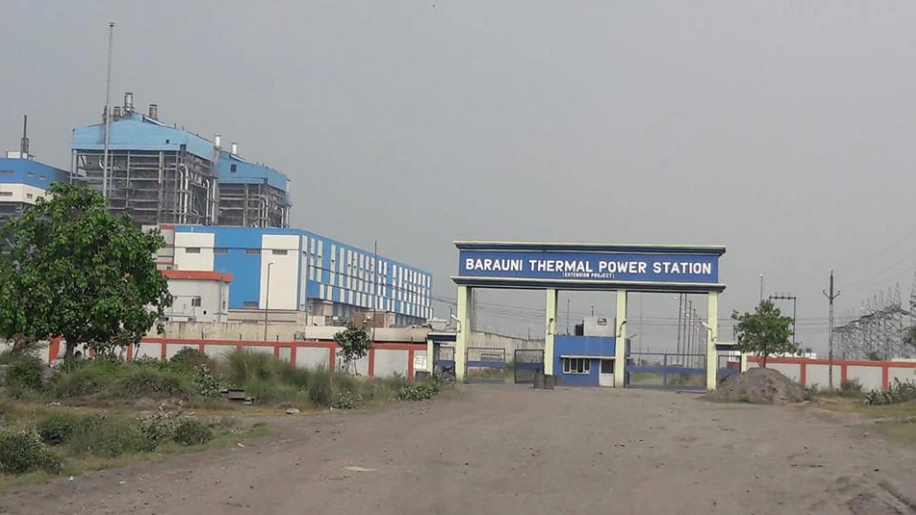
⭕ Top Attractions
🎯 Kanwar Lake Bird Sanctuary: Spot 106+ species, including Siberian cranes. Boat rides available.
🎯 Simaria Ghat: Sacred Ganges spot for sunrise rituals.
🎯 Dandari Reserved Forest: Hike through 63 km² of teak and Mahua trees.
➤ Monsoon Itinerary:
⦿ Day 1: Explore rain-fed wetlands at Kanwar Lake.
⦿ Day 2: Attend a Chhath Puja workshop with local families.
⦿ Day 3: Trek Dandari’s mud trails, ending with Sattu Sherbet at a village stall.
⭕ Culture & Festivals
⦿ Chhath Puja: Women fast and offer Arghya to the sun god in knee-deep water.
⦿ Dhuno-Naach: A martial dance performed during Durga Puja, accompanied by Shankha (Conch) beats.
⦿ Madhubani Art: Buy hand-painted scrolls at Barauni Haat (market), priced from ₹500 – ₹10,000.
➤ Local Cuisine:
⦿ Litti Chokha: Smoked wheat balls with Brinjal mash.
⦿ Sattu Paratha: Protein-packed flatbread, a farmer’s staple.
⭕ Economy: Beyond the Refinery
⦿ Agriculture: 80% rely on farming; top crops include litchi, maize, and oilseeds.
⦿ Dairy: Sudha Dairy processes 2 million litres daily, supplying Bihar and Nepal.
⦿ Industry: Barauni Refinery contributes ₹500 crore annually to Bihar’s GDP.
⭕ Demographics
⦿ Population: 3.86 million (2025 est.).
⦿ Languages: Hindi (80%), Maithili (20%), Urdu (9.5%).
⦿ Caste Dynamics: Bhumihars (landowners) dominate politics; 5 lakh voters belong to the community.
⭕ Travel Tips
⦿ Safety: Avoid isolated areas post-sunset.
⦿ Health: Drink bottled water; street food is safe at busy stalls like Purushottam’s Lassi Corner.
⦿ Shopping: Buy Khadi textiles at Begusarai Market Complex.
🟤 Best Places for Refreshments with Authentic Local Food (Granular Details)
👉 Barauni Haat Market:
⦿ Litti Chokha: Smoked wheat balls stuffed with sattu (roasted gram flour), served with Brinjal Mash. Best at Purushottam’s stall (₹30–50).
⦿ Sattu Sherbet: A cooling drink made from roasted barley, sugar, and lemon. Try at Ramu Tea Corner (₹15).
👉 Simaria Ghat Food Stalls:
⦿ Malpua: Sweet pancakes dipped in sugar syrup, a Chhath Puja specialty (₹20–40).
⦿ Thekua: Crunchy wheat cookies flavoured with jaggery and coconut. Sold during festivals.
👉 Dandari Forest Village Eateries:
⦿ Makhana Kheer: Lotus seed pudding cooked in milk and cardamom. A Mithila delicacy (₹50–80).
🔵 Best Places to Visit with Granular Details
👉 Kanwar Lake Bird Sanctuary:
⦿ Activities: Boat rides (₹200/person), birdwatching towers, photography tours.
⦿ Best Time: October–February for migratory birds.
👉 Naulakha Temple:
⦿ Architecture: White marble structure with intricate carvings of Hindu deities.
⦿ Significance: Built in 1953, it hosts annual fairs during Shivratri.
👉 Simaria Ghat:
⦿ Rituals: Sunrise rituals and evening aarti on the Ganges.
⦿ Nearby: Rajendra Setu, India’s first Post-Independence Rail Bridge.
👉 Dandari Reserved Forest:
⦿ Features: Teak and mahua trees, trekking trails, and tribal craft workshops.
🟡 Where to Stay: Accommodation Options
👉 Hotel O Rameshwaram:
⦿ Price: ₹800–1,200/night.
⦿ Amenities: Basic rooms, 10 km from Barauni Junction.
👉 Rama Royal Resorts:
⦿ Price: ₹1,300–2,000/night.
⦿ Amenities: Garden, terrace, and free parking near Pipra Dewās.
⛔ Complete List of Notable People from Begusarai
➜ Ramdhari Singh Dinkar: Nationalist poet and essayist, known for Rashmirathi.
➜ Sriti Jha: TV actress (e.g., Kumkum Bhagya).
➜ Kanhaiya Kumar: Politician, former JNU Students’ Union president.
➜ Kajal Raghwani: Bhojpuri Actress (Tere Jaisa Yaar Kahan).
➜ Usha Yadav: Maithili singer and composer.
➜ Balmiki Prasad Singh: Former Governor of Sikkim and author.
➜ Kamdev Singh: Infamous gangster dubbed “Pablo Escobar of Bihar”.
➜ Utkarsh Savarna: Bhojpuri singer (Jila Begusarai Album).
✅︎ FAQs
Is Begusarai safe for solo travellers?
Yes, but avoid political rallies and remote areas at night.
What’s unique about Begusarai’s festivals?
Chhath here includes folk songs in Maithili, unlike other regions.
✅︎ Conclusion
Begusarai is a microcosm of Bihar’s evolution—from feudal farmlands to communist battlegrounds and BJP’s developmental promises. Whether you’re a history buff, birdwatcher, or foodie, this district offers a raw, unfiltered slice of India.
“Ready to explore Begusarai? Download our free travel checklist and start planning your Mithila adventure today!”
✅︎ Sources:
2. Begusarai District Wikipedia
Image Credit
1. Wikimedia Commons – Begusarai Railway Station
2. Wikipedia – Kanwar Lake Begusarai, a Ramsar Convention Site wetland
3. Wikipedia – NTPC, Barauni (Barauni Thermal Power Station)
4. Wikipedia – Jaimangla Gadh Temple
For more information, you can visit our website: ExploreXP
“Loved this guide? Share it with fellow travellers and tag us on social media using #DiscoverBegusarai!”
✅︎ Latest Posts
- Bibi Ka Maqbara Aurangabad – Entry Fee, Timings, History, Built by, Images, Location & more
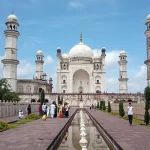
- Bhusawal – Maharashtra’s Hidden Gem of Culture and Commerce

- Bharat Mata Temple, Daulatabad Fort – A Journey Through History & Spirituality
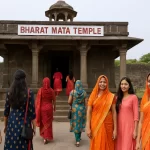
- Bhambavli Vajrai Waterfall, Satara, Maharashtra: India’s Natural Wonder

- Bhadra Maruti Temple Khuldabad, Chhatrapati Sambhaji Nagar (Aurangabad) – Divine History and Travel Guide
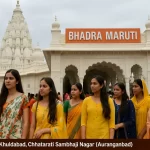
- Begusarai – Industrial Hub of Mithila Heritage

